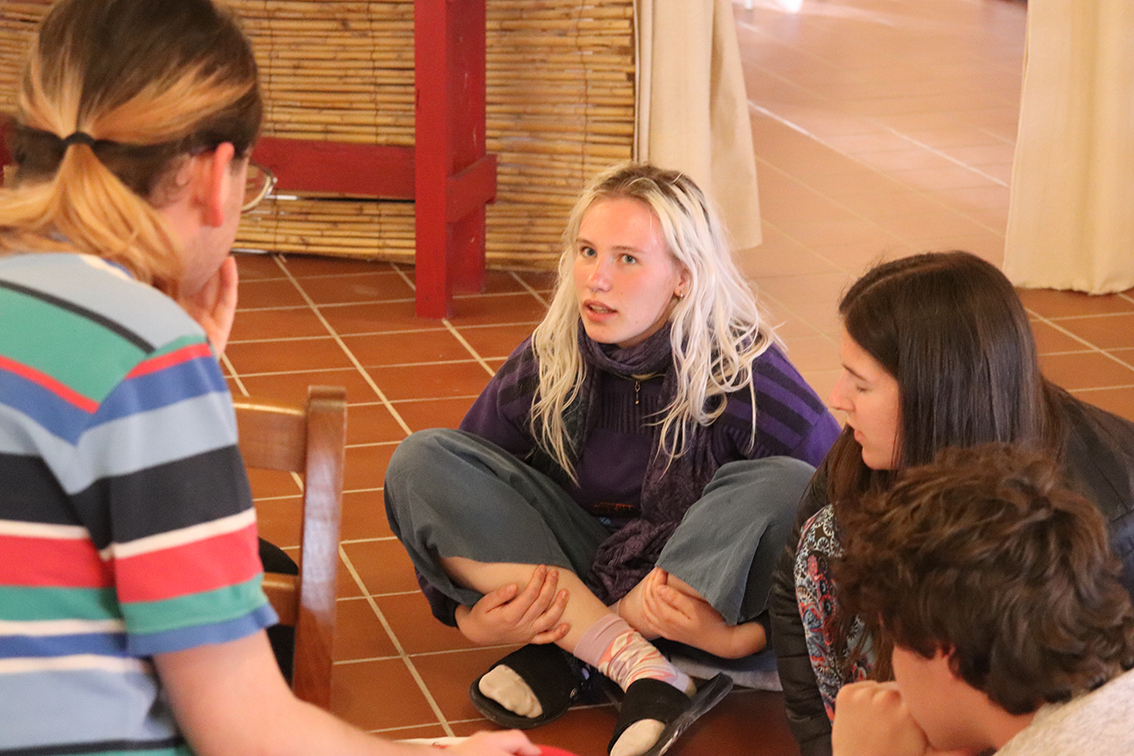Horizontal decision making: Sociocracy
Download the methods
To download the methods, click here
Target group
No. of pax
Environment
Time needed
Materials
• Beamer or flipchart for presentation (Part 1)
• Flipchart paper
• Duct tape or another way to hang papers on wall (optional)
• Handouts with the principles of sociocracy (optional)
Objective/aim
• To introduce participants to the principles and practices of sociocracy
• To engage participants in horizontal decision-making
• To foster collaboration, communication, and inclusivity within the group.
Step by step instructions
If participants have already completed Horizontal Decision-Making: Introduction and Consensus, you may skip Step 1.
Part 1: Introduction and theory
Step 1
20 min
Ask participants what they know about or if they have experienced horizontal decision-making in the past. Briefly define what horizontal decision making means to set a common ground of understanding. Highlight the key principles of horizontal decision making: inclusivity, equality, respect for others and their opinions, and the aim for consensus/consent.
Gather the pros and cons of horizontal decision-making compared to hierarchical decision-making and visualise them on a flipchart
Step 2
10 min
Set the ground rules for respectful communication and equal participation. Involve participants in setting these rules (e.g. by using the brainstorming method or creating a group agreement – see another method in this Toolkit: Group agreement). This may help participants to remember and accept the ground rules more easily, while offering a space that aims to be as inclusive as possible.
This step can be skipped if you have already set the rules with the group beforehand.
Step 3
30 min
Introduce sociocracy (consider preparing a short presentation/handout and using a beamer or flipchart). For more information see: https://www.sociocracyforall.org/sociocracy/
Briefly explain
• The concept and origins of sociocracy
• Its core principles (see below): consent-based decision-making, circle structure, and double-linking
Explain key components
Consent decision-making:
A decision is made when no one has a reasoned objection. If you already tried another method in this toolkit: Consensus decision making, it is good to distinguish between consent and consensus:
- Consensus is full agreement of the group whereas consent is defined as “no objections”, and objections are based on one’s ability to work toward the aims of the group. Members discussing an idea in consent-based governance commonly ask themselves if it is “good enough for now, safe enough to try”. If not, then there is an objection, which leads to a search for an acceptable adaptation of the original proposal to gain consent.
Circle structure:
• Groups are organised in circles.
• Those circles are connected by a General circle (a “higher” circle), which maintains overview on what is going on in the organization generally.
• The General circle consists of people who are members of all other (“lower”) circles. Each circle has autonomy and usually it serves a specific purpose.
• (However in Part 2: Practical activity you will try a different variation where each small circle will deal with the same topic.) In more complex organisations other connected circles may also exist.
• Use this picture to illustrate the structure, including the double linking mentioned below.

Double linking:
- Ideally each circle sends a pair of people to the General circle. One is a Linking Representative, another one is Linking feedback. The representative brings the voice of their circle to the “higher” level discussions and decisions. The Linking Feedback person is the one who communicates back the decisions from the “higher” circle to the “lower” one. This ensures that the “lower” circle can understand the reasoning behind decisions and provide input or feedback.
- The double linking principle helps to keep transparency, accountability, and collaboration throughout the organisation. It ensures that all voices are heard in the decision-making process. Yet in smaller organisations where there may not be enough people, it is possible for one person to hold both the linking representative role and the linking feedback role.
- (In the simplified version in Part 2, each circle selects just one person to act as both representative and feedback link.)
Part 2: Practical activity
(40 minutes or more)
Introduce this activity as a way of horizontal decision making inspired by sociocracy. In this specific scenario all circles will work on a single topic together. There will be just one person from each circle that will hold both roles of Representative and Feedback person. (However you can keep the Double linking principle – consider what is suitable for your group of participants, based on their experience and size of group).
Step 4
15 min
• Divide participants randomly into small circles (4-6 people per circle). You may choose another way to form groups, depending on your context.
• Each circle selects a person that they will send to the General circle. This delegate will represent the conclusions / consent of their circle in the General circle and also bring feedback / consent from the General circle.
• Give each circle the same topic or question to discuss and decide (e.g. “Should we express our political demands verbally in our performance, or should we do it separately?”).
• Remind participants of the Group agreement and encourage those who usually speak a lot to allow space for quieter voices.
• If you have already tried the method Horizontal decision making: Introduction and Consensus, it will be helpful to also ask volunteers in each circle to take the role of facilitator in their circle.
Step 5
15 min
Each circle discusses the topic to generate ideas and reach a preliminary decision. Encourage consent-based decision-making and ensure all voices are heard. Keep track of the time.
Step 6
15 min
Form a General circle – consisting of all delegates from smaller circles. If experienced, a participant can volunteer as facilitator; otherwise, you facilitate. Before the discussion in the General circle starts, Explain that delegates may return to their original circles when needed, e.g. for unclear or conflicting proposals. Start the discussion, try to integrate ideas and if possible reach consent. If consent is reached in the General circle, it is a good idea to verify the validity of this preliminary consent by having the delegates return to their “lower” circles and ask if everyone agrees with it. Then you may reach a group-wide consent!
Iteration (optional)
Repeat step 5 and 6 (30 min)
The larger circle can decide to send the discussion back to small circles for refinement or additional input. This iterative process repeats until consent is reached. In each round, a circle may select a different delegate if they wish. Not only is it recommended to give another participant the opportunity to try this role, but it can also minimise the risk of creating hidden hierarchies in the long term.)
Step 7
15 min
Bring back all participants together. Facilitate a reflection of the previous experience. Use questions such as:
• What did you find easy or challenging about this process?
• Did you feel that your voice was heard? How did that feel?
• What would make it easier next time?
Be open to questions. Highlight that skills for horizontal decision-making develop through practice: each attempt becomes more effective.
Step 8
15 min
Discuss the pros and cons of sociocracy (or horizontal decision making in general) and how it is different from hierarchy and voting.
You may ask questions like:
• Where else can sociocracy be useful?
• Could you apply it in a larger organisation/collective?
• Which is more inclusive, effective, time-efficient, or fun: sociocracy or hierarchy?
• Are there any limits to sociocracy?
• Does hierarchy completely disappear in sociocracy?
• What else can we do to minimise the hidden hierarchies?
Tips for the trainer
• If you’re new to facilitating, this guide may help: Introduction to facilitating meetings: https://www.seedsforchange.org.uk/downloads/short_facil.pdf
• Provide handouts to clarify specific concepts like sociocracy and its core principles, etc.
• Be open to questions. Highlight that skills for horizontal decision-making develop through practice: each attempt becomes more effective.
• Encourage a respectful and inclusive atmosphere where all voices are valued.
• If participants struggle to reach consent, reassure them that this is part of the learning process – skills develop with time and experience.
• Consider summarising the principles of effective, inclusive communication (e.g. active listening, clarifying, staying focused). Write these on a flipchart or provide them as handouts for reference during the practical activity.
Alternative
The practical part of this activity is inspired by sociocracy and does not include the double-linking principle by default. To make it fully aligned with sociocratic principles, include double-linking: each circle selects two people with specific roles – a delegate and a feedback person. For more information, see: Sociocracy for All – Double Linking
Comment


